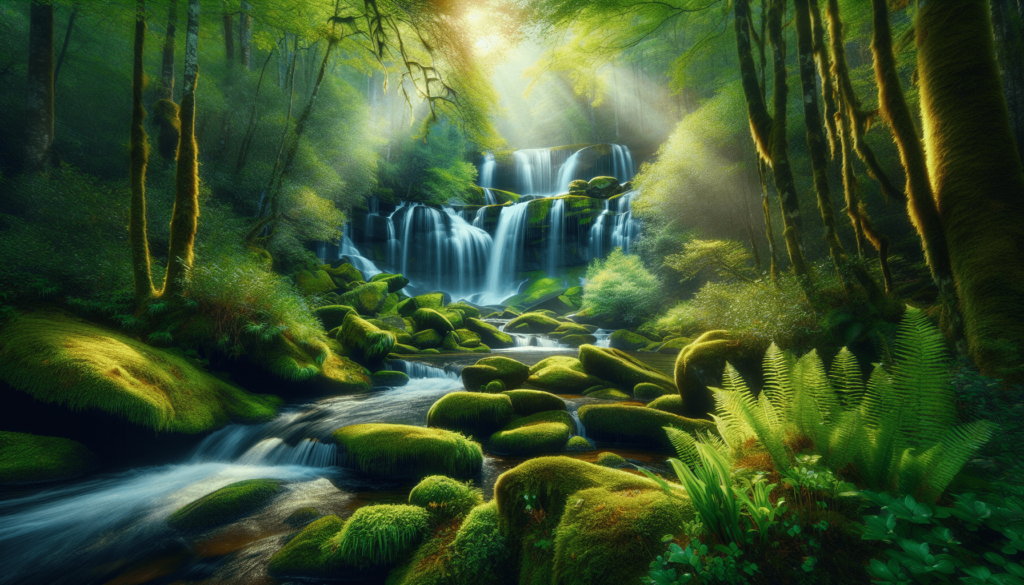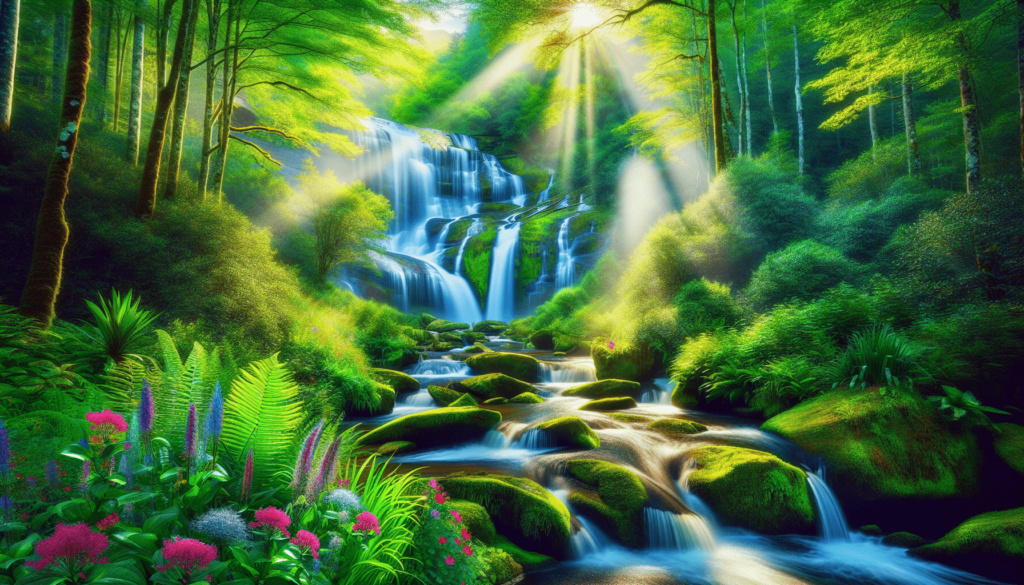Have you ever wondered what it would be like to lose yourself in the breathtaking beauty of nature? If you’re seeking an escape into the great outdoors, Pisgah National Forest in North Carolina might just be the perfect destination for you.
Overview of Pisgah National Forest
Pisgah National Forest covers over 500,000 acres in the western part of North Carolina, primarily within Transylvania, Henderson, and Buncombe counties. This expansive landscape offers a range of recreational activities and natural wonders that can leave you feeling rejuvenated and excited. The forest was established in 1916, making it one of the oldest national forests in the eastern United States. With its lush woodlands, cascading waterfalls, and stunning mountain vistas, Pisgah National Forest attracts visitors year-round.
Location and Accessibility
Pisgah National Forest is conveniently located near the city of Asheville, which is about a 30-minute drive from the forest entrance. This proximity makes it easily accessible for both locals and tourists alike. The main entrance to the forest is through Brevard, North Carolina, where you can find visitor centers that provide maps and information on activities available in the area.
Weather and Best Times to Visit
Understanding the weather patterns in Pisgah National Forest is crucial for planning your visit. The region experiences a temperate climate with four distinct seasons. Summers can be warm, with temperatures typically ranging from 70°F to 90°F, while winters can be chilly, often dropping below freezing at higher elevations.
- Spring (March to May): This is a fantastic time to visit when the flowers bloom, and temperatures become more pleasant.
- Summer (June to August): Ideal for hiking and exploring, but be prepared for occasional thunderstorms.
- Fall (September to November): Known for stunning fall foliage, this season attracts many visitors wanting to see the vibrant colors.
- Winter (December to February): While it can be cold, winter offers unique opportunities like snowshoeing in some areas.
Entry Fees and Permits
Visiting Pisgah National Forest is generally free, which is fantastic for those who want to enjoy nature without breaking the bank. However, certain activities such as camping or specific forest events may require permits or fees. It’s always a good idea to check the U.S. Forest Service website for the most current information to ensure you’re prepared.
Outdoor Activities to Enjoy
Pisgah National Forest is a haven for outdoor enthusiasts. Whether you’re into hiking, biking, fishing, or just soaking in the scenery, there’s something for everyone.
Hiking Trails
The forest boasts over 400 miles of trails that cater to every skill level. From easy-to-moderate hikes to more challenging treks, you’re sure to find a path that suits your preferences.
Popular Hiking Trails:
| Trail Name | Difficulty Level | Distance (Round Trip) | Key Features |
|---|---|---|---|
| Looking Glass Rock | Moderate | 3.2 miles | Stunning views from the top |
| Cradle of Forestry Trail | Easy | 1.5 miles | Historical exhibits and easy walking path |
| Mount Pisgah Trail | Moderate to Hard | 2.6 miles | Rewarding panoramic views |
| Graveyard Fields | Easy | 4.3 miles | Flower fields and scenic vistas |
Whether you’re a newbie or a seasoned hiker, these trails offer varied experiences that can connect you to the great outdoors.
Mountain Biking
If you prefer to speed things up a bit, Pisgah National Forest features some of the best mountain biking trails in the East. With over 100 miles of designated mountain biking paths, you can find everything from fast, flowing trails to technical, rocky challenges.
Notable Bike Trails:
| Trail Name | Difficulty Level | Distance | Description |
|---|---|---|---|
| Bent Creek | Easy to Moderate | 8.4 miles | Family-friendly with well-maintained paths |
| Black Mountain Trail | Hard | 5.3 miles | Challenging terrain, great for experienced riders |
| Pisgah Loop | Moderate | 9.8 miles | A scenic loop with a mix of terrain |
Always wear a helmet and be sure to check for recent trail conditions before heading out.
Fishing Opportunities
The streams and rivers within Pisgah National Forest are teeming with fish! If you enjoy fishing, you’ll find a few great spots to cast your line. The forest is home to a variety of fish, including trout, which can be found in many of the region’s mountain streams.
Fishing Regulations:
- A North Carolina fishing license is required.
- Check local regulations for catch limits and specific fishing areas.
Map out some of the recommended fishing spots, such as the Davidson River, where you can find ample opportunities for a great catch while enjoying the serene waters.
Waterfalls
Pisgah National Forest is renowned for its spectacular waterfalls, with more than 250 falls scattered throughout the area. These cascades range from small trickles to roaring torrents, providing you a visual feast.
Must-See Waterfalls:
| Waterfall Name | Height | Accessibility | Notable Features |
|---|---|---|---|
| Looking Glass Falls | 60 feet | Easily accessible | Stunning views right from the parking area |
| Sliding Rock | 60 feet | Family-friendly | Natural waterslide popular with visitors |
| Moore Cove Falls | 50 feet | Short hike required | Unique rock overhang offering a cave-like feel |
Don’t forget to bring your camera to capture these natural wonders. Each waterfall has its unique charm and offers a perfect spot for a picnic or a short rest during your adventures.

Camping in Pisgah
If you want to immerse yourself fully in nature, camping is an excellent choice. Pisgah National Forest offers a variety of campgrounds, each with its unique characteristics.
Campgrounds Overview
| Campground Name | Facilities | Capacity | Notable Features |
|---|---|---|---|
| Davidson River Campground | Picnic tables, restrooms | 144 sites | Close to the river with plenty of trails |
| Pisgah Campground | Restrooms, showers | 100 sites | Central location near biking trails |
| Lake Powhatan Campground | Picnic tables, restrooms | 41 sites | Offers lake access and swimming potential |
Reservations may be required for busy seasons, particularly during summer and fall, so plan ahead and secure your spot early.
Tips for Camping
- Pack smart: Bring essentials like food, a good tent, and sleeping gear.
- Follow Leave No Trace principles: Preserve the beauty of the forest for future visitors by cleaning up after yourself.
- Check for weather conditions: Be prepared for changing weather, particularly in spring and fall.
Wildlife Watching
Pisgah National Forest is home to a rich array of wildlife. You might be lucky enough to spot deer, black bears, wild turkeys, and various bird species.
Best Times for Wildlife Viewing
Early morning or late evening are often the best times for spotting wildlife. Animals are more active during these cooler parts of the day, so get up early or stay out later for a chance to see them in their natural habitat.
Guidelines for Responsible Wildlife Encounters
- Maintain a safe distance from all wildlife.
- Do not feed any animals, as it can disrupt their natural behaviors.
- Always keep food securely stored to avoid attracting wildlife to your campsite.

Scenic Drives
If hiking isn’t your thing, you can still soak in the stunning landscapes from the comfort of your car.
Blue Ridge Parkway
One of the most scenic drives in the United States, the Blue Ridge Parkway runs alongside parts of Pisgah National Forest. This 469-mile route offers breathtaking views, especially during the fall when colorful foliage blankets the mountains.
Key Viewpoints:
| Viewpoint | Mile Marker | Description |
|---|---|---|
| Craggy Gardens | 364 | Panoramic views, great hiking trails |
| Devil’s Courthouse | 10.6 | Stunning rock outcrops and views |
| Mt. Mitchell | 355.4 | Highest peak east of the Mississippi |
Plan for stops along the way to take in the views, explore trails, or enjoy a picnic.
Cultural and Historical Significance
Pisgah National Forest is not just a natural wonder but also a place of historical importance. Indigenous communities have thrived in this area for centuries.
Historical Background
The forest was once used by various Native American tribes, including the Cherokee. Understanding this history can deepen your appreciation of the land as you explore it.
Forest Service History
The U.S. Forest Service has played a crucial role in conserving this natural treasure. The establishment of the forest in the early 20th century was part of a broader movement to preserve America’s natural landscapes.
Recreational Initiatives
Over the years, various programs have been implemented to educate the public about conservation and responsible recreation. Participating in these programs can enrich your visit and help foster a stronger connection to the environment.
Conservation Efforts
Conserving the beauty of Pisgah National Forest is vital for future generations to enjoy. Organizations and volunteers work diligently to preserve its ecosystems, wildlife, and recreational opportunities.
How You Can Help
- Participate in clean-up events or tree planting initiatives.
- Stay on designated trails to prevent soil erosion and damage to plants.
- Educate others about the importance of preserving natural spaces.
Conclusion
If you’re in search of an outdoor adventure that combines stunning landscapes with a variety of recreational opportunities, Pisgah National Forest in North Carolina is the place for you. From hiking and biking to fishing and camping, this national treasure offers something for everyone. With a rich history, a commitment to conservation, and endless opportunities to experience the beauty of nature, Pisgah National Forest invites you to unwind and create lifelong memories. So grab your gear, plan your trip, and immerse yourself in the incredible experiences awaiting you in this magical part of the world.

